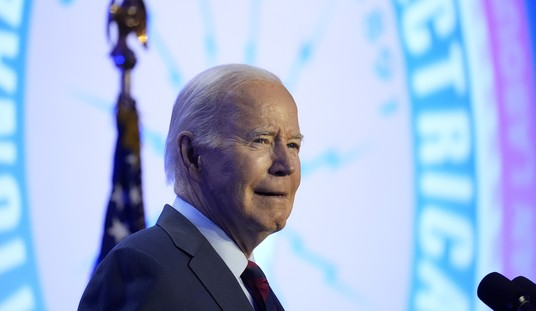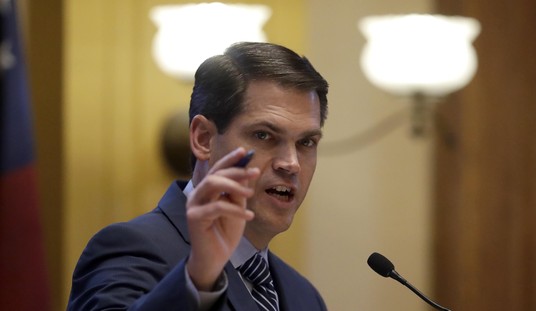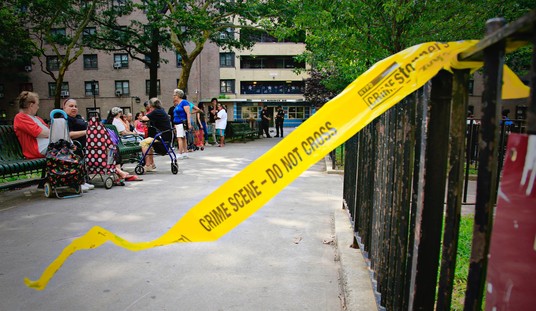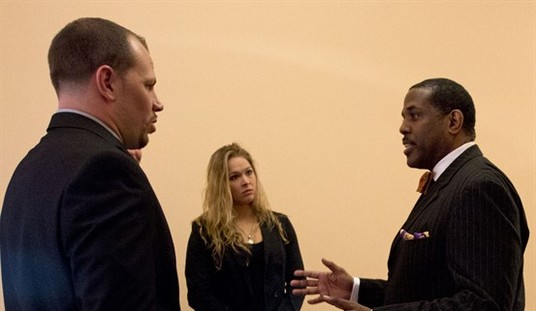Kenneth Melson, acting director of the U.S. Bureau of Alcohol, Tobacco and Firearms and Explosives, was in San Antonio, Texas, on August 12 for the signing of a new agreement with ranking Mexican counterparts to more effectively interdict gun smugglers moving weapons into the hands of Mexico’s drug cartels. The pact, which is designed to allow for a far greater number of serial number traces of captured weapons long kept off limits in Mexican military vaults, is part of President Barack Obama’s new push to address the problem. Controversy has erupted between Second Amendment rights advocates and gun ban advocates over exactly how many weapons captured in Mexico actually originate from U.S. firearms retailers — and thus whether the Democratic Congress and White House might deem more sales regulation to be necessary.
Earlier this year, the president ordered hundreds of ATF agents and support staff to the border, most of them to Texas, citing tracings of thousands of seized guns in Mexico to American stores. For nearly four months, ATF agents have been projecting an unprecedented show of force among these American dealers. Among their activities, ATF agents have been inspecting retail holders of federal firearms licenses to ensure they are not knowingly selling guns to “straw purchasers,” who turn around and hand them over to cartel operatives, who in turn smuggle them over for use in Mexico’s high body count civil drug war.
In an exclusive interview with me, Melson discussed his agency’s supercharged efforts in Texas, the nation’s top source state for weapons recovered from cartel gunmen and later traced to U.S. firearms dealers. I have written extensively about gun and ammunition smuggling to Mexico. I have also weighed in on the numbers controversy for Pajamas Media.
To date, nearly 23,000 handguns and assault-style firearms captured from drug trafficking organizations have been traced to licensed retail firearms dealers in Texas and elsewhere. But untold thousands more captured weapons remain untraced and inaccessible in Mexican military vaults, leading to fierce political squabbling over the total numbers. Adding fuel to the fire is the fact that Mexican military officers have refused to provide serial numbers or ATF access to the vaults. But all that is about to change with the pact Melson signed recently in San Antonio alongside Homeland Security Secretary Janet Napolitano.
Among the highlights of the interview with Melson is that he believes most of the untraced weapons still in Mexico’s vaults will almost certainly turn out to originate not from foreign countries, as Second Amendment rights advocates insist, but from U.S. gun dealers. He also revealed that gun smugglers are countering Obama’s ATF push along the border by simply moving to stores farther inland.
Also present was J. Dewey Webb, special agent in charge of the bureau’s Houston field division, who occasionally interjected.
TB: It’s my understanding that the Mexican military has been less than competent in helping with traces and also not providing access to military vaults containing seized weapons. What’s yours?
Kenneth Melson: Those issues will be resolved in the next couple of weeks when [Immigration and Customs Enforcement Secretary] John Morton and I, and a couple of other department officials and border patrol individuals, go down to Mexico to meet with the Mexican authorities on those very issues. I expect we’ll have a resolution to the access to those weapons at that time. That’s our hope.
TB: What kind of access are we talking about now?
Kenneth Melson: The access that the ATF is looking for is the ability to work with the Mexican authorities to examine the guns for the appropriate information, to take off the guns for purposes of tracing.
TB: You’d send ATF agents into these vaults?
Kenneth Melson: Yeah. If they invite us in, we’re ready to go to work with them on that. We’re working with them on that. That’s what this letter of intent is for. It is an expression of our intent to work on a set of protocols for sharing of information and sharing of access, both on the U.S. side and on the Mexican side, with respect to this evidence. On the Mexican side, for us to get access to information we can use to provide an intelligence base for us and for the Mexicans. And on the U.S. side, for purposes of making sure the cases we develop can be used in Mexico to help develop their cases against individuals in Mexico, who are not in the U.S.
TB: So there’s no access right now to speak of. Can you elaborate on that?
Kenneth Melson: There has been some access but it’s limited. We’re going to be working on expanding that. And that’s very important because part of the issue is the information that we actually get off the weapons. We have to have the information to do a full and complete trace. And as you know, we’re also going to be expanding in December the Spanish language E-trace, which will allow them to more easily electronically trace their weapons through ATF.
TB: How would you guess the untraced weapons over there will turn out to be from, if and when they are finally traced?
Kenneth Melson: That’s hard to say now. It’s really speculation and you’ve heard the statistic that of the weapons successfully traced, 90 percent came from the U.S. That’s not a scientifically acceptable statistical sample. But looking at that, there is a probability that a good percentage of those [untraced weapons still in Mexican vaults] came from the U.S. as well. There was a recent case that we had of a seizure in Mexico where when we traced those guns a very high percentage came from the U.S. as well. So it will not be surprising that a lot of guns came from the U.S.
TB: How would you assess so far the effectiveness of the ATF’s new deployments to Texas and elsewhere?
Kenneth Melson: We haven’t completed the 120-day period for our team but we’re very close and when we finish we’ll do an assessment of them. But a preliminary indication is that they’ve been very successful. We’ve been able to do almost 1,000 inspections of FFLs (federal firearms licensees who retail guns), which is just tremendous down here because our number of inspections had been every four, five, six or seven years and now we’ve got 1,000 of them inspected. And they have generated leads to other law enforcement agencies through these inspections. And taking up some of the leads that were uninvestigated before we went down, we’ve generated a number of cases that have been referred to prosecution and referred out to other agencies for investigation. And so I think you will see that the surge down here in Texas has accomplished something and it really shows what we could do if we could maintain that surge, not only here but expand that concept over to Arizona and California and New Mexico. I think some of the two measures of success will be the number of prosecutions completed and successful, but also the number of weapons recovered and specifically the numbers of inspections at FFL. Because that is a significant part of stopping the flow of weapons. I think the FFL inspections are very important in stopping the flow of weapons, as well as the investigation part.
TB: What’s been the reaction from the FFLs to all of these inspections?
Kenneth Melson: I haven’t heard much of a complaint. They understand that we do inspections. That’s part of our job. That’s part of our law. I have not heard any huge complaint from the FFL community. Many of them have not been inspected for years and years.
Webb: We have not had one FFL complaint as far as what we’re doing. We have had complaints from other sources as far as where we’re going and what we’re doing, things like that.
Kenneth Melson: As always, we try to go in to the FFLs and try to be very professional as far as where we go and what we’re looking for. I think the lack of complaints shows how professional our people are.
TB: A lot’s been said about improved relations between our side and Mexico on this issue, for instance signing agreements like this one today. But what else have we not talked about that still needs to improve over there in terms of helping you and them interdict more weapons?
Kenenth Melson: I think the next step to improvement is the creation and signing of our document of principals and our protocols as to how evidence is handled in Mexico so we can use that evidence in U.S. prosecutions, but also getting access to crime scenes and so forth. So we have early access to weapons. We do that a lot now. Right now we have our border agents who will respond immediately across the border to these violent incidents and work very closely with the Mexicans at the scene. By doing that, we can get them more timely information about the nature of these weapons or prior incidents they’ve been used in.
TB: Has any evidence emerged that the source of weapons sales has moved inland since this ATF deployment to the border areas?
Kenneth Melson: There certainly are source states inland. I can’t say they’ve developed since our deployment down to Texas. But the point we try to make from time to time is the smuggling of guns across the southwest border is not just an issue for the four border states. It is an issue for the entire country. We’re finding that states like Washington and Florida and others that are removed from our southwest border are source states as well. I can tell you from other enforcement areas that when you put the squeeze in one area, the bad guys are smart enough to know they should move to another area. So we expect that the more we concentrate on the southwest border, the more we’ll have to also concentrate on some of the interior states.
TB: Is that being tracked? Where are they moving into the interior?
Kenneth Melson: We have a document that shows what the interior states are: Washington, Florida, Georgia, Michigan …
TB: Has this occurred since the redeployment?
Kenneth Melson: We can’t say it has occurred since the redeployment
Webb: The only feedback we have right now — and it’s hard to measure this — is that we’ve gotten calls from gun dealers that go to the gun shows, especially from the Houston area, that the gun shows are squeaky clean, that everybody knows we’re there. They haven’t seen the unlicensed dealers, the crooked folks everybody knows. We feel we’ve pushed them to other places, but it’s one of those intangibles that we really can’t measure right now. We’ll just have to see. The majority of the guns are being bought as the result of straw purchasing. That’s what most of our investigations are showing.
Kenneth Melson: If two weeks ago they moved to another state, if they’re bought from gun shows we won’t know that they were smuggled to Mexico until they’re recovered in Mexico. So it’ll be awhile after our deployment ends that we’ll see the result of them going to other places in the U.S. So the stats we have with respect to source states were generated before and during the deployment. It takes awhile to know the trend because we have to kind of reverse engineer the process. We have to recover the gun first before we can determine where it came from and how it was smuggled.
TB: How do you respond to this idea that’s out there all the time that if you throw as many resources as you possibly want to at this problem, you’re till never going to stop this flow? They’ll get it from somewhere else.
Kenneth Melson: Well, i don’t think that’s completely true. I think we can ultimately control the flow of guns to Mexico. The harder issue is how about the guns coming up from other countries other than the U.S. That may be a longer challenge. But what we’re seeing is greater cooperation with other countries like Guatemala. We are now working with them on tracing a lot of the guns seized in Guatemala. If we can shut down the source of guns going to Guatemala, that may shut down the guns going through Guatemala to Mexico.
TB: What’s known about American guns going to Guatemala? Talk about that.
Kenneth Melson: We don’t have the trace results back but we have recently been working with them to trace a number of guns that they have. We’re in the process of tracing 6,000 guns right now. But we don’t have any statistical analysis now.
TB: Are you talking about military grade weapons or from American gun stores?
Kenneth Melson: I think these are a variety of guns seized down there, in crimes or other events down there in Guatemala. We’re going to find that just like with drugs they’re going to look for different ways to get guns into Mexico. You can almost use the same methods you use for drug dealing for gun smuggling. There’s a lot of ways to get into Mexico other than our border.
TB: What about military weaponry? You see these rocket launchers, grenades, and machine guns all over the place.
Kenneth Melson: We have no information at this point that any of these weapons or explosives showing up down there are coming from U.S. military bases or military personnel at this point.
TB: Where are they coming from? What do you know about that?
Kenneth Melson: They may be coming from other countries. If they’re military grade weapons, they may have been part of a sale to another country.
TB: Is that an ATF jurisdiction anyway?
Kenneth Melson: Probably not. It wouldn’t be our jurisdiction. If they were sold in another country and expropriated from there, that’s outside our jurisdiction.
TB: Is it safe to conclude that of the total seizure of weapons in Mexico that the military grade weapons make up a small or large faction?
Kenneth Melson: It’s difficult. Most of the guns traced so far are guns that can be purchased in the U.S.








Join the conversation as a VIP Member